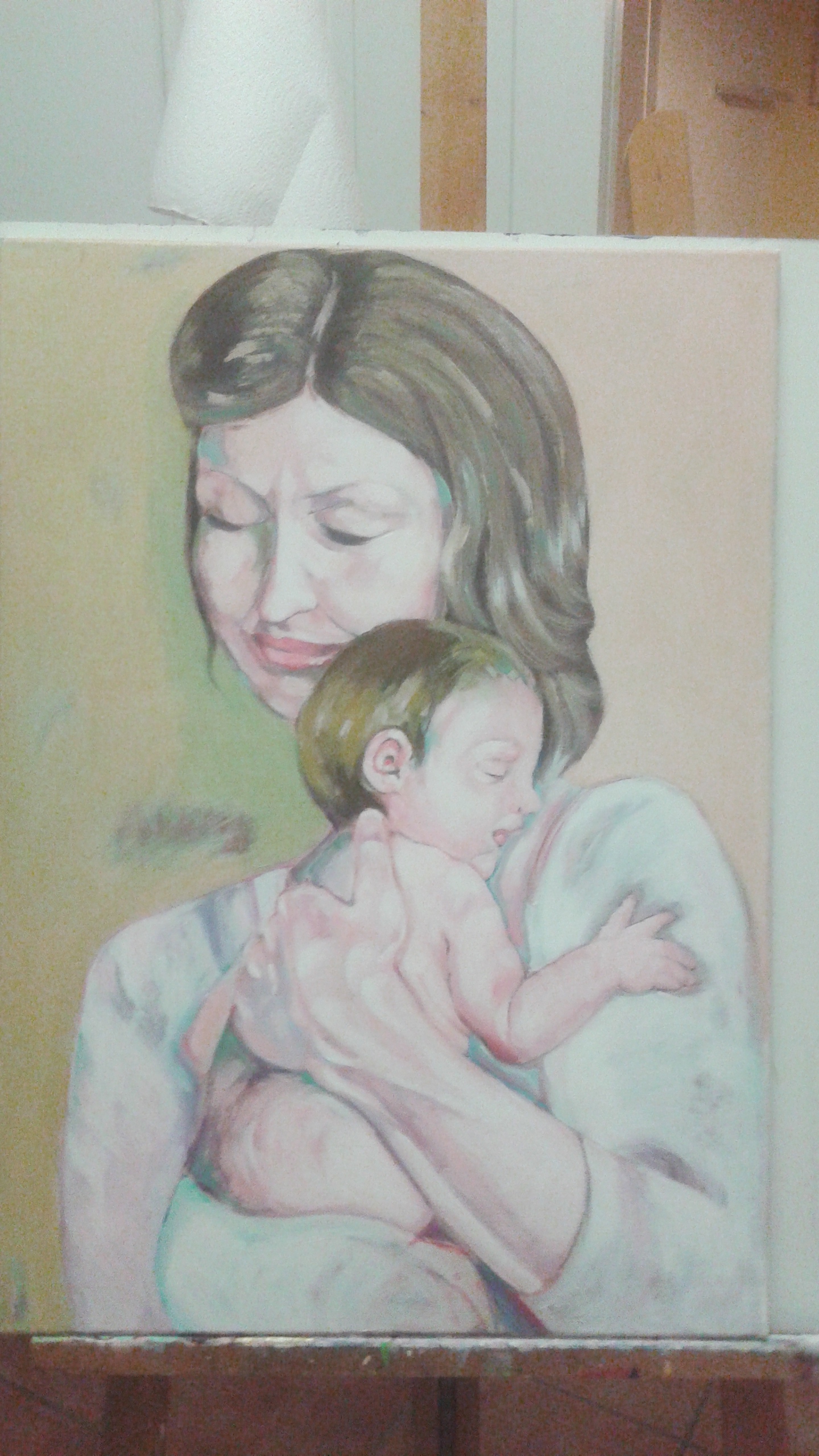There but for fortune go you and I (Edited)
‘When it comes to understanding addiction, the dilemma of not seeing is deep. Our defences will not allow us to be aware of our own pain and the dysfunctions in which we seek escape from it. That failure of self-recognition sets up an invisible boundary between society and socially-ostracized addicts, and all too often between health care professionals and their clients’ (Gabor Mate)

Today’s post has come about as a result of what I have been doing over the last two weeks. I have been working on this mother and child painting and going through notes on early attachment experiences, and also, reading Gabor Mate’s book, In the Realm of Hungry Ghosts. While reading I realised I have not previously written on addiction even though it is highly connected to early attachment injury and neglect and the intergenerational transmission of trauma. Dr Mate discusses how compromised early bonding and attachment injuries impact our neurochemistry and areas of the brain, which can then make humans and other mammals susceptible to addictions. He adds that ‘there is no accusation, only the fundamental reality that suffering is multigenerational, that we pass it on unwittingly until we understand it and break the links in the chain of transmission within each family, community, society. Parent-blaming is emotionally unkind and scientifically incorrect. All parents do their best; only our best is limited by our own unresolved or unconscious trauma.’
This courageous, in my opinion, book, contains gut wrenching case studies that highlight diverse aspects of the broader addiction reality, diverse research and statistics, deep etiological commentary, information on epigenetics and the physiology of addiction, discussions on attachment failures and injuries that predispose people to more extreme self destructive coping strategies, and also, the invested interests, politics and economy of drugs. The conversation also focuses on spirituality, inequality, social injustice and unaddressed historical traumas. In particular, he refers to native populations and groups that have suffered extensively from oppression, unemployment, dislocation, dispossession and exploitation, as well as, the disruption of family life and the erosion of stable communities. He writes ‘inevitably, addictions are most prevalent and most deadly among populations who, historically, have suffered the most enduring trauma and dislocation’. Read more…..
